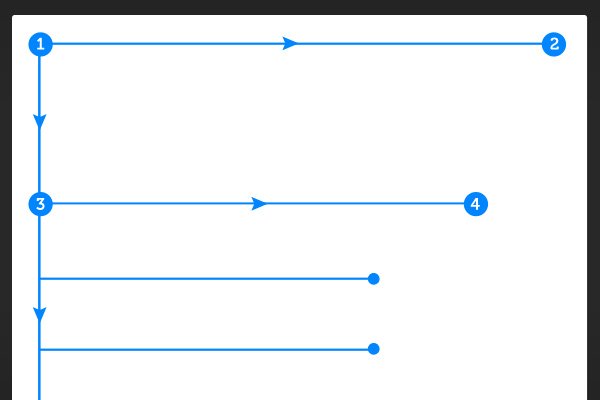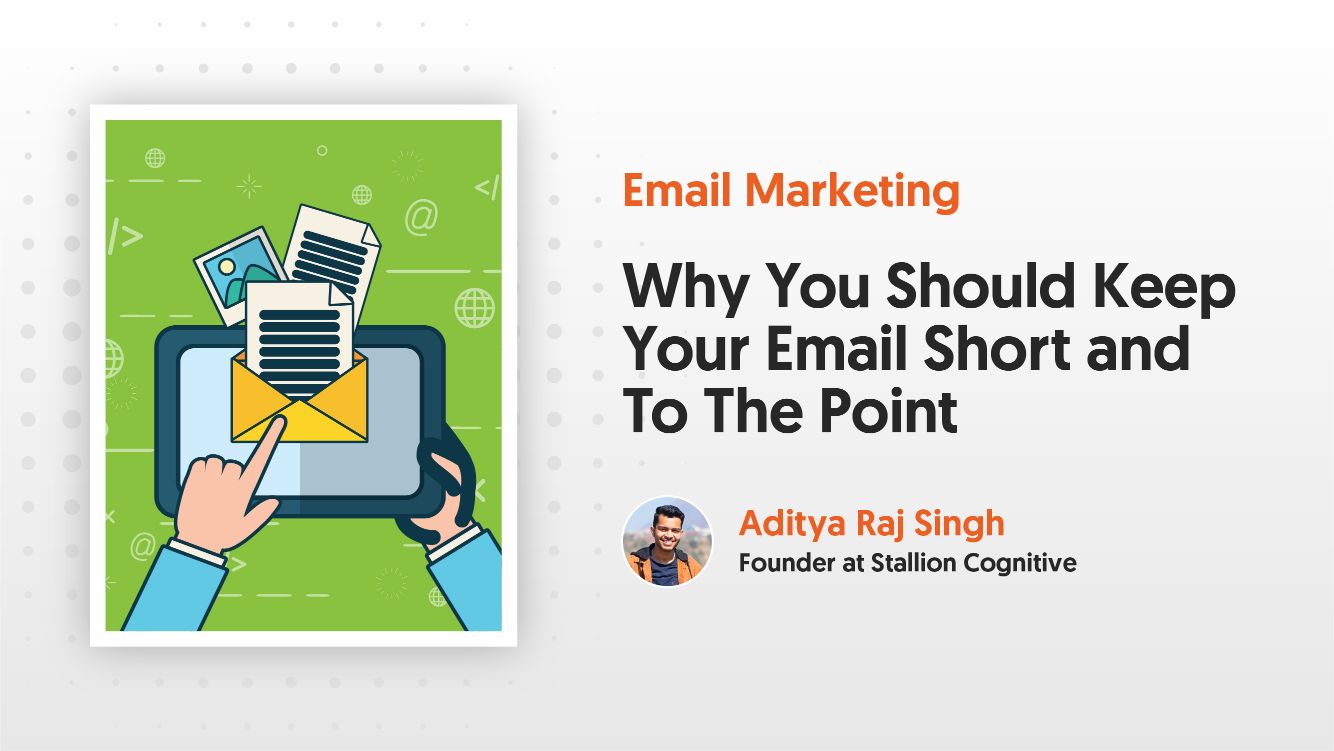From crafting personalized content to collecting feedback & surveys, improving sales, increasing leads, marketing products & services, communicating with audiences, and a lot more, email provides numerous benefits to businesses.
If done correctly, email marketing is one of the most successful content marketing strategies.
The length of your emails is likely one of the main reasons they aren't successful in generating new business. Don't bother your consumers with endless, tedious emails that no one wants to read.
This is an easy method to lose subscribers and potentially new prospects and sales.
Even if you're a great writer, Getting your idea through in as few words as possible is far more effective than wasting time crafting a novel-length email.
And the biggest reason for that is the global attention span is shrinking due to the amount of information presented to the public. As per the report published in The New York Times, Time Magazine, and USA Today, "the average attention span is down from 12 seconds to 8 seconds, which is less than the nine-second attention span of your average goldfish."
People's attention spans are becoming shorter, so if you want to get the most out of your email marketing efforts, you must emphasize the most crucial parts of your message.
You should keep emails short, concise, effective, informative, and entertaining.
But writing an effective short email is not a piece of cake. Condensing a large amount of information into a concise but still informative message takes time, patience, and skill.
After all, most of us write and receive emails daily without ever taking the time to learn the ins and outs of what constitutes a successful campaign.
Not to worry, though, as we've compiled a few helpful tips for you to craft the most effective short emails along with the values of short emails for your business.
Why Should You Keep Your Email Short?
When writing an email, the key is to make the message brief and engaging. Your email's goals and purpose may be communicated on a single page.
Generally, an email's two most important parts are the subject line and the call to action.
Let's examine the other benefits of sending a short email:
Describes The Whole Purpose In A Shorter Way
Think about why you're sending this email before you begin writing. Do you want to build brand awareness? Have you written a new blog article and want to let your readers know?
- Do you want to market or sell your products or services?
- Are you asking for feedback from customers?
- Do you have any part in welcoming a new client?
Describing your email's purpose at the beginning of your document may assist readers in understanding your intent. If you start to ramble, you can write this down and remove it later.
Write just what is necessary to back up your objective after establishing it. Keep off-topic comments for another email thread unless they're very important. Don't be hesitant to utilize numerous messages with different subject lines to keep conversations organized and easy to follow; after all, email is free.
Generate Curiosity
Keeping your email brief (ideally, 125 words or fewer) maintains your readers' interest. Generating curiosity is like having a powerful fishing net to catch customers.
If you send an email that is too lengthy and contains too much information, your subscribers will be bored. However, teasing them with snippets of information will make them more eager to read your next email.
Increase Engagement & Interaction
A shorter email has a better chance of being read and answered than a larger one. People reading have a lot of material to go through, so if you don't hook them in the first few phrases and establish credibility, they'll probably just toss your message instead of reading it all the way through.
Similarly, blog postings only have a few paragraphs (and occasionally only a headline) to capture readers' attention before they move on.
Sending a concise email will make your readers narrow their focus on a single topic. A reader may greatly benefit from such a helpful suggestion or insightful observation.
When people can concentrate on your message, it is simpler for them to take action.
Respect Your Reader
Respect is another important advantage of short emails. They demonstrate appreciation for the recipient's time.
Certainly, some individuals will check their mailbox daily and receive maybe a dozen emails, the vast majority of which will be easily dismissed newsletters or irrelevant offers. Others are required to go through hundreds or thousands of emails daily.
Every day, people are inundated with emails from numerous companies and services. By keeping their emails brief and concise, they are able to distinguish themselves from their competitors.
Less than 2.5 minutes is all you need to read a brief email. A person may easily consume this while working, relaxing, or traveling.
Easy to Digest
When emails are concise, and to the point, subscribers save time without deciphering the message.
These days' internet users just don't have the time or focus on reading every word on every website they visit. They use a scanning strategy known as the "F-Pattern" to take in information.

By breaking up long emails into manageable segments, you may encourage people to read through and complete the conversion process using the "F-Pattern" scanning method.
Top 7 Practices to Write the Most Effective Short Emails
If you want to send shorter emails without jeopardizing your content, consider the following suggestions.
Define Your Email's Goals
It's important to have a purpose for every email you send: request approval for a new project concept, market products or services, establish brand recognition or just send an informational newsletter. The important thing is to keep it in mind while you begin writing.
That will help you stay on topic and minimize unnecessary digressions, resulting in a shorter email. Writing, proofreading, and editing may all go more quickly with its help. Bear in mind that, for the sake of clarity and conciseness, each email should focus on a single objective.
Craft A Potent, Informational Subject Line
Be direct and to the point right away. Make sure the subject line of your email clearly states the reason for writing, the action you seek from the recipient, and the urgency with which you seek it. Concise subject line writing helps you consider the message's purpose before you add it to someone's already overwhelming inbox.
You may start the subject line with a term that hints at the purpose, such as "Request," "Sign," or "Decision." Then, after using the term, explain why this decision was made.
Be specific about when you'd want to hear back from people; for example, "Images for Blog. We need your input by this coming Friday. Use the "Just a heads up" label if the email contains just information and does not need any action.
Again, however, emphasize the relevance of the details to the reader. Send an FYI only if the receiver genuinely needs to know the details being sent. You're merely adding to their inbox congestion if it's just something you find intriguing.
Keep it Brief
Use the "KISS Rule" when drafting an email - "Keep it Simple and Short."
There should be no more than seven sentences. Your email copy, for instance, may be divided up like this:
Introduction: You should introduce the topic in a few simple phrases here. Simply introduce yourself and offer a greeting.
Clarify your reasons: Three or four concise sentences should be sufficient to convey your meaning. Detailed product-related inquiries and attached files for evaluation and feedback may be posted here.
Context: Here is where you can give any background or context that is important.
Close: All you need here is a quick summary: "Thank you for taking the time to think about it. I hope to hear from you shortly."
Break Up the Text
Remember that people love lists and headings.
If you feel that bullet point lists are beneath you, you would not be alone in that sentiment. Perhaps you'd be hesitant to use bullet point lists, even though you have no issue with them in theory due to practical considerations.
It's fairly uncommon for such lists to be highly wordy despite their seeming brevity.
If you need to send an email with more than a few phrases, break it up into paragraphs. Instead, split the text visually into paragraphs of just a few phrases long. Lists of questions, tasks, or contextual details should be formatted using numbers or bullets.
Suppose the email is being sent to multiple recipients.
In that case, it can be helpful to bold the name of the person you are addressing or the person you have assigned work to so that they can quickly find the information that is directly relevant to them.
Use the Right Template
It's important to ensure you're always using the proper email template. Incorrect use of a template might provide information overload without providing enough structure.
The finest email layouts will have a hierarchy of information, letting you put the most crucial details right where they'll be viewed first. Knowing how your material will be presented forces you to make better judgments about the appropriate duration of your content.
Consider Using Images
Sending out emails without any accompanying visuals is unwise. A picture is worth a thousand words, and with the appropriate photos, you can express much in a few words in an email.
Always remember that the more graphics you include in your emails, the longer it will take for your subscribers to open them. Avoid including too many photos, and ensure the ones you use are web-optimized.
Have One Goal Per Email
Before emailing potential clients, be sure you have a good reason to do so. It's not a good idea to send emails without determining what you want to achieve. That's why it might have a negative effect and keep the open email rate at 0%.
Make sure to include how you intend to reach out to potential participants, from proposal submission through outreach initiatives.
If you can work that into the first paragraph of your email, that would be ideal. Each email you send should be directed at accomplishing one specific objective. The chances of your communication being read and responded to improve dramatically.
Conclusion
The above tips are standard best practices for penning efficient business emails.
Because we're not telegraph machines, we sometimes need to send emails that are lengthy and/or full of emotion.
Likewise, it's not a bad idea to put pen to paper sometimes; just don't make it a habit.


